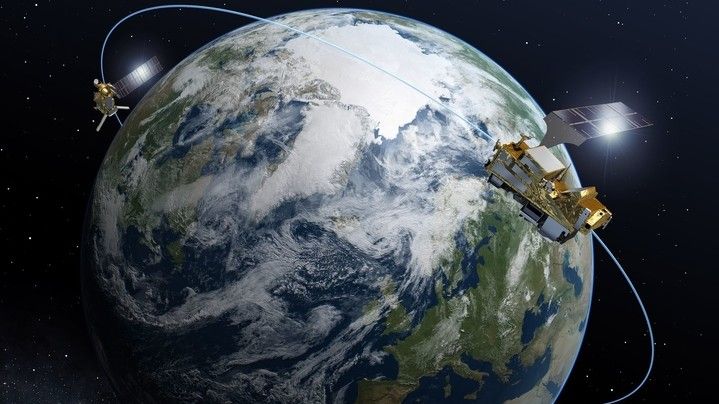ESA and EUMETSAT Create a New Constellation of Weather Satellites, Using Polish Support

Polish manufacturers are currently working on specific test equipment used to validate the ground stations assigned to the MetOp-SG weather satellites programme. The test equipment is known as MetOp-SG RF-SUITCASES. It is being implemented by Astri Polska as a part of an initiative driven by ESA and EUMETSAT. The Polish company is already assembling the first of these systems.
The Polish company has been entrusted to design and manufacture three ESGE-class equipment for the MetOp-SG programme. On one hand, the Simulation Front End rack and the Simulated Electronical Flight Model rack, are both used to validate some critical satellite functions such as the attitude and orbit control loops, and the correct final satellite assembly and integration. On the other hand, the RF Suitcases are used during the validation and qualification of the MetOp ground segment.
The RF-Suitcases emulate the physical RF signals and communication protocols used between the satellite and its ground segment. The first objective is to validate the ground station compatibility with the signals generated by the satellite, namely the housekeeping telemetry and the mission science data. The second objective is to validate that the telecommands sent by the ground station are compliant with the satellite communication subsystem. Finally, critical ground station functions such as satellite distance measurement via round-trip signals, or resilience to transmission errors can be validated and characterized. In order to provide the required RF representativity, the suitcases embed pieces of the satellite RF communication sub-system, such as transponders, modulators, amplifiers, while an on-board computer and a mass-memory unit provide real telemetry. Thanks to the solutions provided by Astri Polska, the operators can check that their ground segment is correctly configured to support the uplink and downlink communication channels with the satellite.
Within the scope of the MetOp-SG programme, Astri Polska will deliver eight different EGSE systems. The first two Simulation Front End units have already been handed off. One Simulation Front End unit, one Simulated Electronical Flight Model unit and four RF suitcases will follow.
Among the four RF-Suitcases manufactured by our company, two are dedicated to the “S” band stations which are used to command and control the satellite. The other two Suitcases operate in “X” and “Ka” bands which are used to transfer the mission science data back to Earth.
In order to cover the full RF spectrum required by the satellite, three specific RF Suitcases variants have been designed, one for each frequency band of operation (S, X and Ka). As some ground stations used by the MetOp programme are located in Antarctica and Svalbard, the Suitcases are designed to sustain unusually low temperatures of operation, down to minus 25 degree Celsius. Furthermore, as such locations can only be reached by small aircrafts, it constrains considerably the suitcases dimensions. Specific containers are used to ease and sustain the transport operations.
MetOp is a European constellation of weather satellites whose mission is to deliver weather data for climate monitoring purposes and accurate weather forecasting. The programme is a joint initiative funded by ESA and EUMETSAT. Two out of the three first-generation MetOp satellites are already operating since 2006 and 2012 respectively, and the last one is due to launch at the end of 2018. Astri Polska, is involved in the MetOp Second Generation project which is the continuation of this initiative. The second generation will require six satellites, operating in pairs starting from 2021. The two generations will overlap to guarantee a continuity of service.
Astri Polska is one of the first Polish companies generating 100% of its revenue by working in the space sector. It is also the sole Polish entity that remains in possession of proper know-how in the field of testing the GNSS receivers designed for space applications. At the moment the entity is involved in 20 projects related to development of space and satellite technologies in the area of electronics, optomechatronics and satellite applications and services, mostly implemented for ESA.
